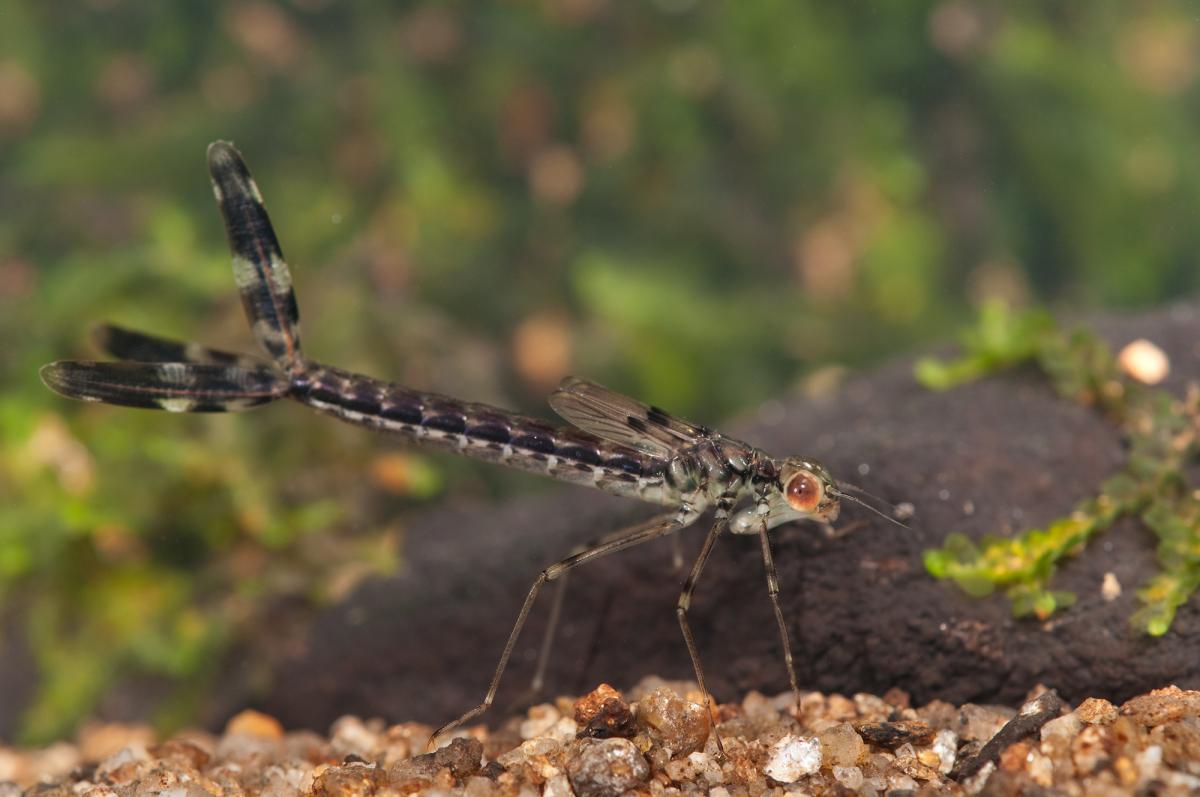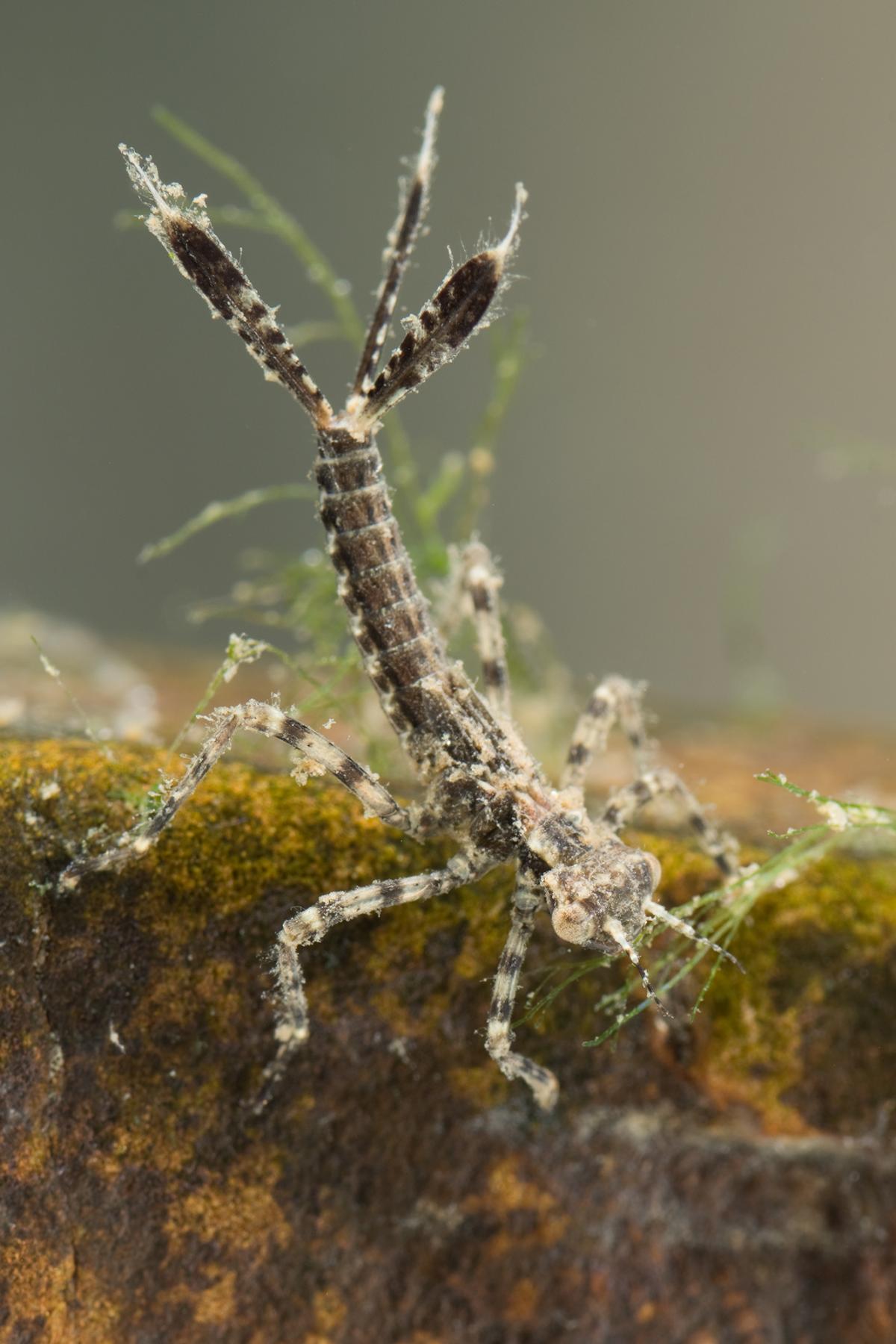Damsel Fly Nymph
Aquatic insects such as damsel fly nymphs are fascinating creatures that live in freshwater ecosystems. These nymphs are a favorite of fly fishers and are also a crucial food source for predatory fish. In this post, we'll take a closer look at damsel fly nymphs and their behavior, diet, and overall significance in their ecosystem.
Damsel Fly Nymph Pain Points
While damsel fly nymphs are important in aquatic ecosystems, they can also pose as a problem for some people. Damsel fly nymphs thrive in freshwater environments, which makes them quite common in lakes and other bodies of water. Their presence, however, can become an issue for those who use these bodies of water for recreational purposes like swimming or boating. Damsel fly nymphs are known to bite, which can cause a painful and itchy reaction in some people.
Answering the Target of Damsel Fly Nymph
Damsel fly nymphs are aquatic insects that are part of the Odonata family, which includes both damselflies and dragonflies. These nymphs spend much of their lives in freshwater environments, where they eat and grow until they reach adulthood. Adult damselflies and dragonflies do not live very long, so the majority of their lives are spent in their nymph stage.
Summary of Damsel Fly Nymphs
Damsel fly nymphs are fascinating aquatic insects that spend much of their lives in freshwater ecosystems. They are an important food source for predatory fish and are considered a favorite among fly fishers. While their presence can pose a problem for recreational water users, they play a crucial role in their ecosystem and are essential to maintaining a healthy aquatic environment.
Behavior of Damsel Fly Nymphs
Damsel fly nymphs are crawlers, which means that they crawl along the bottom of their water habitats. These nymphs are often found near vegetation or rocks where they can cling to and hide from predators. They are also known to be strong swimmers and can quickly dart away when they feel threatened.
Once damsel fly nymphs reach their adult form, they become active fliers and are often seen hovering above the water surface. This behavior allows them to find a mate and reproduce before their lives come to an end.

Damsel Fly Nymphs as a Food Source
Damsel fly nymphs are a favorite food source for many predatory fish species like bass and trout. Fly fishers often create artificial nymphs to mimic the real thing, making them a popular choice among anglers. Nymphs are also an important indicator of a healthy aquatic environment. If there are no nymphs in the water, it could be a sign that the environment is unhealthy, and there are no predators for them to feed on.
In addition to their role as a food source, damsel fly nymphs contribute to the nutrient cycling process in freshwater ecosystems. As they consume organic matter, they excrete it back into the water, providing nutrients for other organisms to feed on.

The Life Cycle of Damsel Fly Nymphs
Female damselflies lay their eggs in aquatic vegetation or on rocks near the water. Once hatched, the damsel fly nymphs begin their life underwater, where they will spend the majority of their time. These nymphs will molt anywhere from six to 15 times before reaching adulthood, which can take anywhere from two weeks to several years, depending on the species. Nymphs can reach anywhere from 10 to 60 millimeters in length.
Personal Experience with Damsel Fly Nymphs
One summer, while fishing on a local lake, I observed a group of damsel fly nymphs crawling along the bottom of the lake. They were a deep green color, and their elongated bodies made them stand out against the rocky lake bottom. It was fascinating to watch them move as they searched for food. I could see why these nymphs are such a favorite of fly fishers, and I gained a new appreciation for their importance in the ecosystem.
FAQs About Damsel Fly Nymph
Q: What do damsel fly nymphs eat?
A: Damsel fly nymphs feed on small invertebrates like zooplankton, insect larvae, and other small aquatic creatures.
Q: How long do damsel fly nymphs live?
A: Damsel fly nymphs can live anywhere from several weeks to several years, depending on the species and environmental conditions.
Q: What is the purpose of introducing damselflies into a garden pond?
A: Adding damselflies to a garden pond can help control mosquito populations, as damselfly nymphs feed on mosquito larvae.
Q: Do damselfly nymphs pose any danger to humans?
A: Although damselfly nymphs can bite, their bites are not poisonous and typically only cause minor itching and redness.
Conclusion
Overall, damsel fly nymphs are fascinating aquatic insects that play a crucial role in their ecosystem. As both a food source and an indicator of a healthy aquatic environment, these nymphs are essential for maintaining a thriving freshwater ecosystem.
Gallery
Central Alberta Fly Tying Club: Damselfly Nymphs And Adults

Photo Credit by: bing.com / damselfly nymphs fly tying adults damsel alberta central club
Spread Winged Damselfly Nymph | Global FlyFisher

Photo Credit by: bing.com / nymph damselfly winged
Damselfly Nymph | Fly Fishing Colorado, Aquatic Insects, Damselfly

Photo Credit by: bing.com / damselfly nymph nymphs larvae fly damselflies larva dragonfly insects insect trout dragonflies fishing baby freshwater inaturalist exclusively genus almost marine
Damselfly Nymph (Panboola School Water Bug Survey) · INaturalist.org

Photo Credit by: bing.com / nymph damselfly bug water larva blue
White Legged Damselfly Nymph | Global FlyFisher

Photo Credit by: bing.com / damselfly nymph legged
